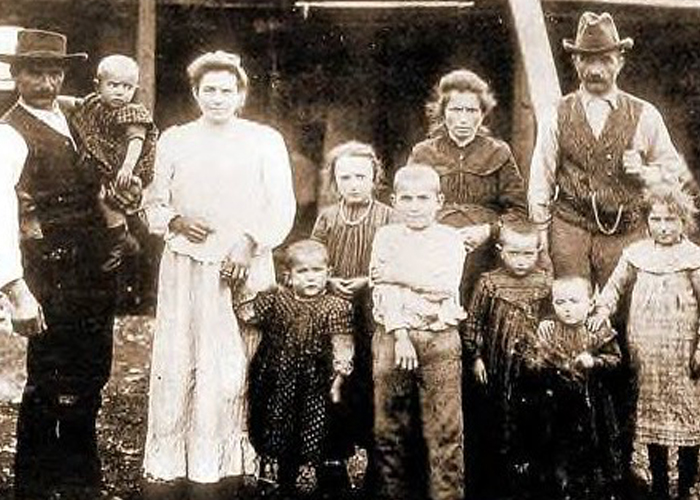For most of the late 19th and early 20th centuries, Italian immigrants were the largest ethnic minority in the United States, comprising 10 percent of the nation’s foreign-born population by 1920. Escaping semi-feudal conditions in southern Italy, including the islands of Sicily and Sardinia, these Italian immigrants began arriving in the country in large numbers in the late 1880s, seeking better work and life conditions.
Most immigrants arrived at Ellis Island in New York after spending three months traveling in steerage or third class during the 3,000-mile journey from Italy to the United States. While some families were separated and sent back to their homeland upon arriving on American soil, the stories of those unlucky few struck fear in prospective immigrants. Ellis Island, therefore, earned an ugly nickname: l’isola delle lagrime, the island of tears.

Three men pose near of a harbor: the place of arrival and departure for many emigrants. The photograph very likely will be sent to their families remaining in the homeland. Photography sepia tones. Italy, 1920 approx. (Photo by Fototeca Gilardi/Getty Images)
By 1920, over four million immigrants had left Italy and were building new lives for themselves in American cities such as Boston, New York, and San Francisco. In the United States, many of these immigrants were subject to abuse and discrimination. Because of their darker skin tones, they were not considered to be “white,” and their Roman Catholic faith contrasted violently with the nation's Protestant majority. In the 1890s alone, more than 20 Italian immigrants were lynched by anti-Italian mobs. This era of Italian immigration is widely documented, but there is another period during the 20th century in which Italians came to the country that is generally underreported.
After World War II, more than 600,000 Italians immigrated to the United States, the majority of which arrived between 1946 and 1970. Italy struggled to resettle its citizens after the disruption of the war that it had lost, and a lack of employment and a poor standard of living pushed many immigrants to renew their faith in the sogno Americano, the American dream.

By the end of World War II, many Italians who were already settled in the country had begun moving out of their crowded historic enclaves and into larger houses in the suburbs they could finally afford. This resulted in an almost mass exodus of the country’s Little Italies, most prominently in Boston’s North End and Manhattan’s Little Italy. The new wave of Italian immigrants after the war helped replenish these Italian American neighborhoods and promoted the dissemination of the Italian language, which was already ceasing to be spoken by the 1950s.
Italy’s economic boom of the 1950s and 1960s also created a shift in Americans’ perception of Italian immigrants. While immigration had begun to taper off, the cultural and economic renaissance the country was experiencing in the post-war years meant that Italy was gradually associated with culture, fashion, and style – themes that endure today.
Asia London Palomba
Asia London Palomba is a trilingual freelance journalist from Rome, Italy. In the past, her work on culture, travel, and history has been published in The Boston Globe, Atlas Obscura, The Christian Science Monitor, and Grub Street, New York Magazine's food section. In her free time, Asia enjoys traveling home to Italy to spend time with family and friends, drinking Hugo Spritzes, and making her nonna's homemade cavatelli.


